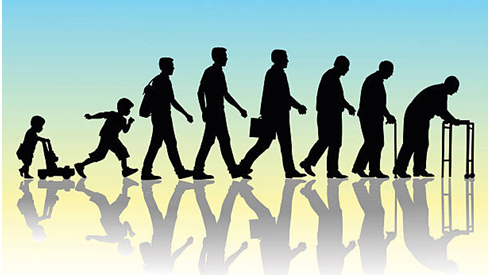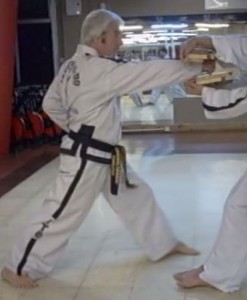
A comment: The name Taekwondo and the techniques used in the 2024 Olympics have absolutely nothing in common with our art, which sounds the same but is written differently and serves other purposes and practical uses.
I want to emphasize what is happening today in the teaching of Taekwon-Do, how we are carrying out the transfer of knowledge, and what the result of today’s education will be. A seminar or an IIC is supposed to be very serious, special occasions for transferring details, unifying the criteria used, and acquiring the knowledge that the new generation of black belts does not yet have.
It does not take a high-degree Black Belt to train in combinations of kicks and punches that any instructor can teach. Do you think a high-degree Black Belt is necessary to ask people at a seminar for kicks and punches that are typically imaginary combinations, useful only for the one giving the order? Beyond this point, it is also important to note that it is not appropriate to give a general command for sports combinations when they cannot be used by all the people present. It would be like thinking that all students or practitioners are going to fight the same way—impossible.
Moreover, when a high-degree instructor teaches in this way, they are only showing what works for them or what they think works for them. General Choi Hong Hi never taught anything about the sports aspect. He always believed that it was not good to talk about this part in a seminar; he used to say it wasn’t the right place for it.
When general commands are given, or a combination is shown, no consideration is given to the people present: some are taller, others more robust, some are younger, others older, etc. Some techniques may work for
certain body types and be useless for others. Not all ages have the same possibilities. In summary, doing this shows a lack of teaching experience.
Perhaps, and only perhaps, it is a good method to improve the abilities of those seeking Taekwon-Do purely as a sport. To apply this method, it is necessary to understand that the use of sports combinations is only useful in that realm, against a single opponent, and under the restrictions imposed by competition rules. But a martial art is something else that requires a different way of thinking and training. General Choi’s Taekwon-Do is undoubtedly a martial art, one that delegates to direct instructors the various ways to train their students for the sports arena.
On one occasion, while accompanying the Founder of the art as a translator during a seminar in an Argentine city, one of the attendees (who was a good free-fight competitor) repeatedly asked about the sports aspect and how to stop an attacker in that type of fight if they were taller than him.
General Choi, tired of the same question, said that this wasn’t the right place to consider sports questions. However, due to the persistent inquiry, he made an exception: “OK, you’re taller than me, come attack me,” and with his hands behind his back, he moved slightly without excessive motion as the student attacked him. The General suddenly counterattacked by kicking the occasional opponent right at the belt knot.
Everyone began to applaud, surprising the student, who could not have imagined such a resolution. After this remarkable response, the Founder said: “No one can teach how to resolve such a moment. It’s personal. I saw the opportunity to counterattack, and I did so, but as a reflex, without thinking.”
In conclusion, no one can systematically teach how to defend others physically with pre-established combinations, because every person is different in structure and reflexes, as different as the circumstances. The key lesson from this anecdote is to avoid changing the purpose of meetings
or gatherings. The training ground is where students go daily to perfect their knowledge under the guidance of the Instructor.
A seminar or IIC is a special opportunity to learn and teach about the structure of the Art, its protocol, its pedagogical system, the biomechanics of its movements, and the understanding of its philosophical aspect (Do). But it is essential to clearly distinguish between martial art and the combat system typically used in the sports arena. Thank you for your time.
SGM Ricardo Desimone
To be aware read again the previous notes







 Most likely, the majority are unaware that, in the early days of the discipline in the West, everything revolved around attending the practice venue. The Instructor/student relationship was the gateway to guidance and knowledge of the sought-after skills.
Most likely, the majority are unaware that, in the early days of the discipline in the West, everything revolved around attending the practice venue. The Instructor/student relationship was the gateway to guidance and knowledge of the sought-after skills.